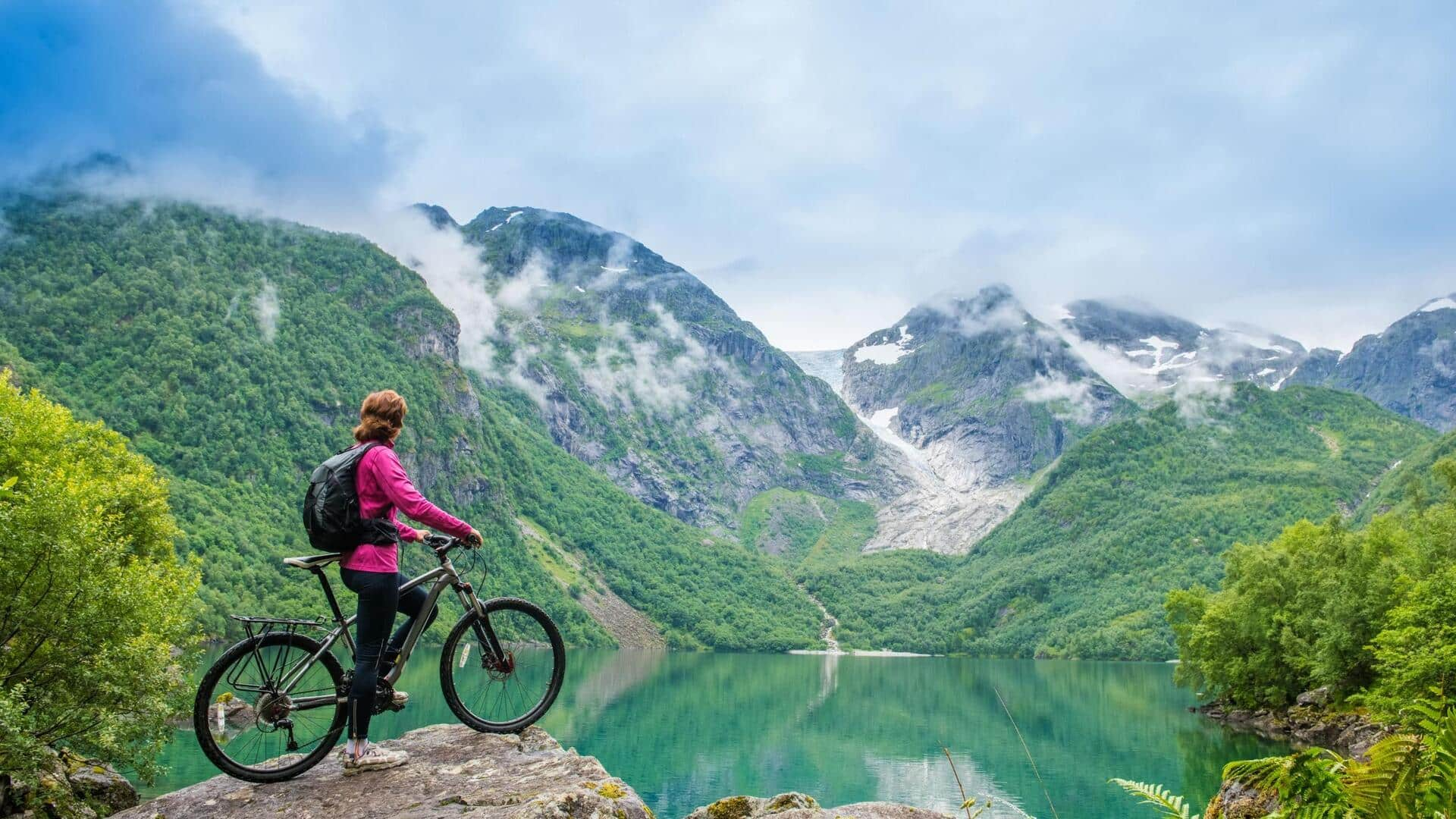
Cycling through Norway: Best coastal routes
What's the story
Exploring Norway's coastal routes by bicycle is a unique way to experience the country's stunning landscapes and rich maritime history. The routes offer a blend of challenging terrains and breathtaking views, making them ideal for adventure seekers. From the rugged cliffs to serene fjords, these paths provide an immersive journey through Norway's natural beauty. Here are some key insights into navigating these scenic trails.
#1
Discovering the Romsdalsfjord route
The Romsdalsfjord route is famous for its dramatic scenery and cultural landmarks. Cyclists can enjoy views of towering mountains and deep blue waters. The route also passes through quaint villages where you can experience local traditions and cuisine. Riders should be prepared for varying weather conditions, as the coastal climate can change rapidly.
#2
Exploring the Lofoten Islands by bike
The Lofoten Islands are famous for their picturesque landscapes and vibrant fishing communities. Cycling here gives you the chance to explore secluded beaches, jagged peaks, and charming hamlets. The islands' mild climate makes it a year-round destination, although the summer months are particularly popular due to longer daylight hours.
#3
Navigating the Atlantic Road adventure
The Atlantic Road is famous for its engineering marvels and stunning ocean views. This route features several bridges connecting tiny islands, giving cyclists a unique perspective of Norway's coastal geography. While the road is mostly flat, some sections may have strong winds, so riders should be cautious.
Tip 1
Tips for safe cycling in Norway
Safety should be the top priority when cycling along Norway's coastal routes. Always wear a helmet and make sure your bike has proper lights and reflectors for visibility during low-light conditions. It's also important to stay hydrated and carry enough water, as well as snacks, for longer stretches without services.